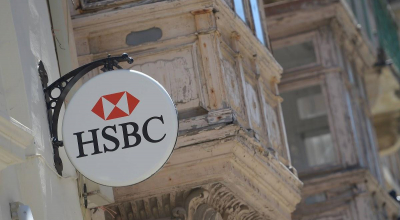PA set to approve Excelsior and Ramla Bay hotel extensions
Both projects set to have major visual impacts on iconic views

The extension of the Excelsior and Ramla Bay hotel will be the first two major decisions to be taken by the recomposed Planning Authority’s board, which is now chaired by Emmanuel Camilleri.
In both cases the case officer is recommending approval.
The most controversial decision will be taken on 11 August, when the board will convene to decide on plans for the construction of a new five to six storey lateral extension to the Excelsior hotel along a retaining wall beneath the fortifications.
Plans for the 77-room addition to the Excelsior Hotel have been downscaled from an original proposal presented in 2018, in which the new wing rose above Great Siege Road obscuring the bastions.
But the project will still have a major impact on harbour views as seen from Msida and Ta’ Xbiex, a visual impact study confirmed in May.

The study based on photomontages of the proposed development, considers the lateral extension of the main hotel building along the eastern boundary of the site where it borders Great Siege Road, as the “most critical element” of the proposed development in terms of changes to the townscape.
The study concludes that the new hotel wing will change views of the harbour fortifications, which are designated as an Area of High Landscape Value (AHLV) from four points across Marsamxett Harbour.
The most noticeable change will be in the views from the west, from Msida and Ta’ Xbiex, where the new accommodation wing would be more exposed than when viewed from the east. The new wing will screen much of the retaining wall along Great Siege Road.
“As viewed from Msida and Ta’ Xbiex, the new accommodation wing will screen much of the retaining wall along Triq L-Assedju Il-Kbir and will serve to pronounce the hotel against the backdrop of the Valletta Fortifications,” the study by ADI Consultants concludes.
But the case officer is dismissive of these concerns arguing that the proposed new wing will complement the existing approved hotel in an holistic project which will promote high quality accommodation standards within the Maltese Islands, in line with the demand of the market.
“The proposed design, with a low-lying profile and with the choice of materials, will not dominate the existing hotel or its surround context, creating a visual impact that has been overall considered acceptable within its immediate and wider context,” the case officer said.
The report points out that the proposal has been positively considered by the Malta Tourism Authority in terms of number of beds and facilities provided within the whole complex, by the Environmental and Resources Authority in terms of environmental impact, by the Superintendence of Cultural Heritage in terms of visual and archaeological impact and by Transport Malta in terms of impact on the existing network.
The Superintendence for Cultural Heritage has recently given its blessing to the hotel extension making its approval more likely. But surprisingly no consultation has taken place with UNESCO despite Valletta’s World Heritage Status.
The heritage watchdog welcomed the fact that the redesigned wing will not extend above the level of Great Siege Road, nor will it visually encroach on the lower part of the scheduled fortifications and obscure them describing this as “a very considerable improvement on the earlier proposal”.
Ramla bay hotel set for 400 room extension
Another decision due on 4 August which will have a major impact on the iconic view of Cirkewwa from the Gozo ferry is the extension of the Ramla Bay hotel. The new development will comprise 400 guest rooms, a banqueting area, restaurants and new kitchen facilities, a gym and indoor swimming pool, car park facilities, and new landscaping.
The new development will complement the 100 apartments approved in 2019.
According to the case officer, the innovative design of the proposed development will “contribute to a new lively and livable high-quality accommodation standard” creating “a land-mark building” which “merges within its context, due to the organic shapes extruded from the morphology of the promontory” and will “promote a re-branding of the Maltese Islands as a destination of choice worldwide”.
In this case, the project does not even have the go-ahead of the Superintendence for Cultural Heritage, which had warned that views of Marfa, as seen from Comino and from seacraft in the Gozo Channel will forever “be conditioned and marred by the enormous volume extending above the existing skyline.”
Malta’s cultural heritage watchdog warned that this development will “subvert the current and longstanding perception of Malta as seen from the ‘il-Fliegu’ crossing”.
But the case officer contends that these concerns were addressed through a “partial redesign of the upper part of the buildings”, mainly consisting of the relocation of rooftop services, which led to “a lessening in the overall volume.”




.png)

.jpg)








.jpeg)




.png)

